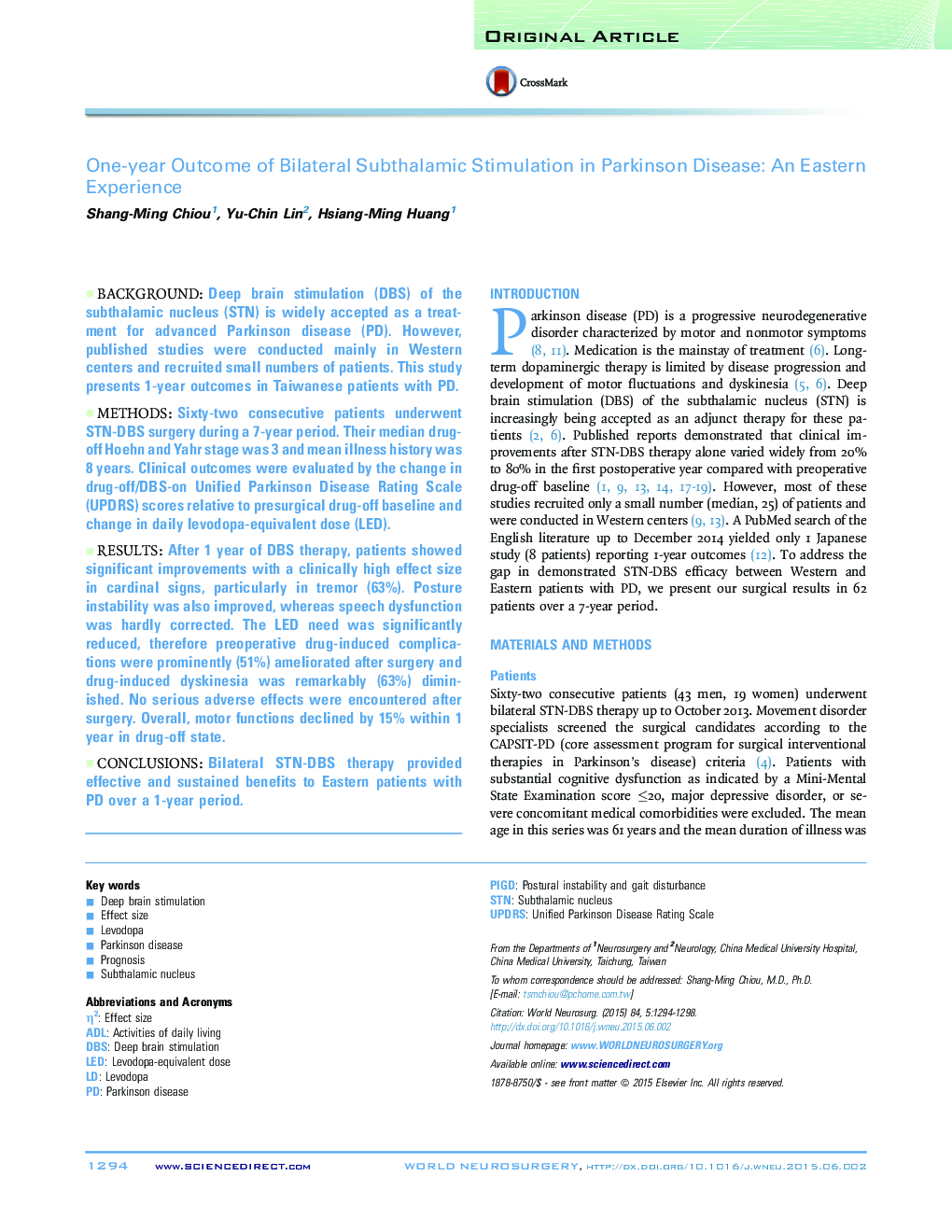| Article ID | Journal | Published Year | Pages | File Type |
|---|---|---|---|---|
| 3095160 | World Neurosurgery | 2015 | 5 Pages |
BackgroundDeep brain stimulation (DBS) of the subthalamic nucleus (STN) is widely accepted as a treatment for advanced Parkinson disease (PD). However, published studies were conducted mainly in Western centers and recruited small numbers of patients. This study presents 1-year outcomes in Taiwanese patients with PD.MethodsSixty-two consecutive patients underwent STN-DBS surgery during a 7-year period. Their median drug-off Hoehn and Yahr stage was 3 and mean illness history was 8 years. Clinical outcomes were evaluated by the change in drug-off/DBS-on Unified Parkinson Disease Rating Scale (UPDRS) scores relative to presurgical drug-off baseline and change in daily levodopa-equivalent dose (LED).ResultsAfter 1 year of DBS therapy, patients showed significant improvements with a clinically high effect size in cardinal signs, particularly in tremor (63%). Posture instability was also improved, whereas speech dysfunction was hardly corrected. The LED need was significantly reduced, therefore preoperative drug-induced complications were prominently (51%) ameliorated after surgery and drug-induced dyskinesia was remarkably (63%) diminished. No serious adverse effects were encountered after surgery. Overall, motor functions declined by 15% within 1 year in drug-off state.ConclusionsBilateral STN-DBS therapy provided effective and sustained benefits to Eastern patients with PD over a 1-year period.
